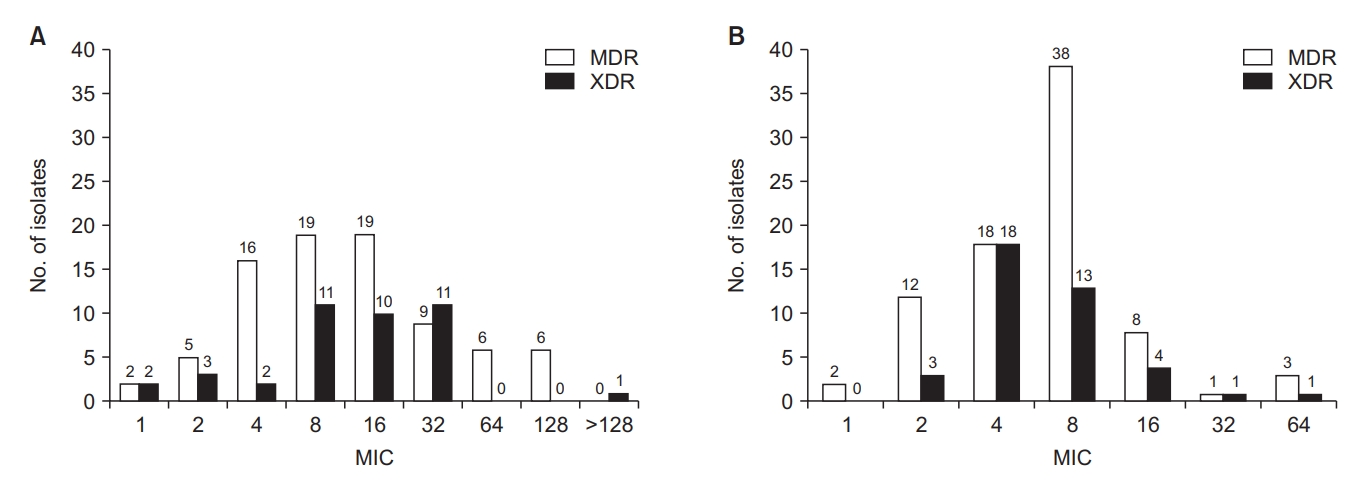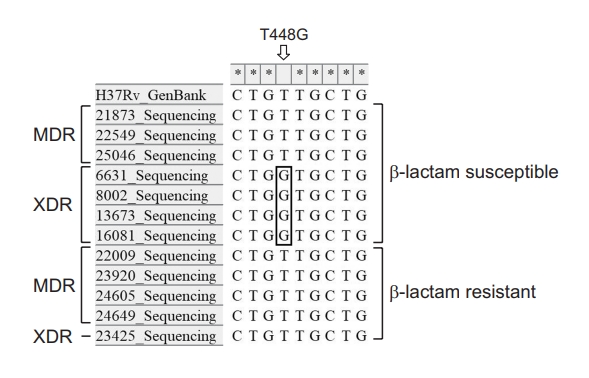 |
 |
| Tuberc Respir Dis > Volume 85(3); 2022 > Article |
|
Abstract
Background
Methods
Results
Notes
Acknowledgments
Figure 1.

Figure 2.

Table 1.
Mtb: Mycobacterium tuberculosis; MIC: minimum inhibitory concentration; MDR: multidrug-resistant; INH: isoniazid; RFP: rifampicin; EMB: ethambutol; RBU: rifabutin; PTO; protionamide; OFX: ofloxacin; LEV: levofloxacin; MFX: moxifloxacin; CS: cycloserine; SM: streptomycin; XDR: extensively drug-resistant; KM: kanamycin; AMK: amikacin; PAS: para-aminosalicylic acid; PZA: pyrazinamide; CPM: capreomycin.
Table 2.
| Primer | Sequence (5’-3’) | Product length (bp) | Reference |
|---|---|---|---|
| BlaCF | ATGCGCAACAGAGGATTCGGTC | 924 | Li et al. [11] |
| BlaCR | CTATGCAAGCACACCGGCAACG | ||
| crfAF | ACCCGGCTCACAGAGAATCG | 457 | |
| crfAR | TATCACCGGTAGGCCATGC | ||
| dacB2F | ACCAGCAACTGCTGGATTTC | 1,196 | |
| dacB2R | CGTTGATGACCAACGTCTTC | ||
| LdtBF | ATGCCAAAGGTGGGGATTGC | 1,227 | |
| LdtBR | TTACGCCTTGGCGTTACCGGC | ||
| LdtAF | ATGCGTCGAGTGGTTCGTTATC | 756 | |
| LdtAR | CTAGCCGACCACCTCAATGG | ||
| BlaIF | ATGGCCAAGCTGACACGG | 417 | In this study |
| BlaIR | TCAAGTCTCCGTTGCCGC |
Table 3.
Table 4.
References
- TOOLS
-
METRICS

- ORCID iDs
-
Sanghee Park

https://orcid.org/0000-0002-1515-4235 - Funding Information
-
Masan National Tuberculosis Hospital
4631-304-210-13 - Related articles
-
An Overview of Genetic Information of Latent Mycobacterium tuberculosis2021 January;84(1)


 PDF Links
PDF Links PubReader
PubReader ePub Link
ePub Link Data Sharing Statement
Data Sharing Statement Full text via DOI
Full text via DOI Print
Print Download Citation
Download Citation



